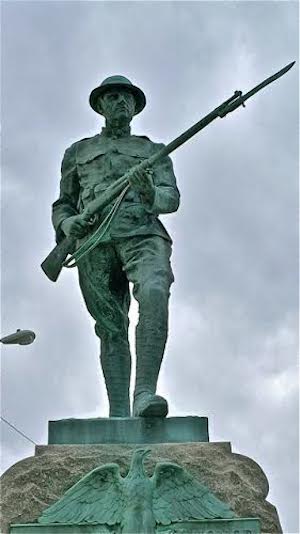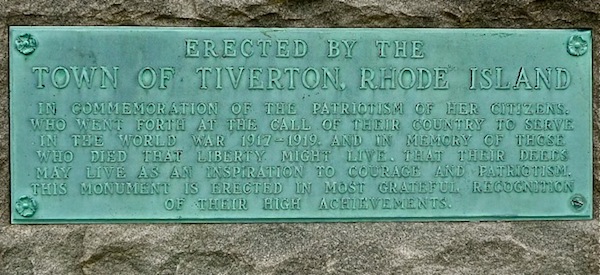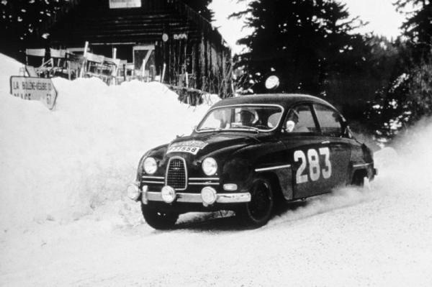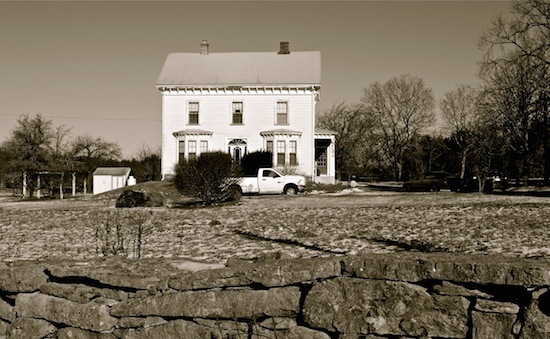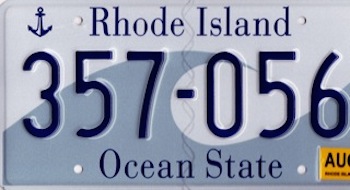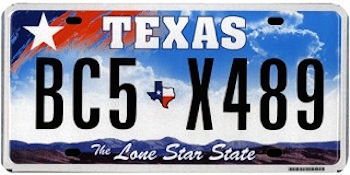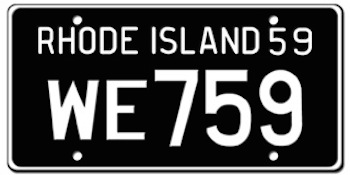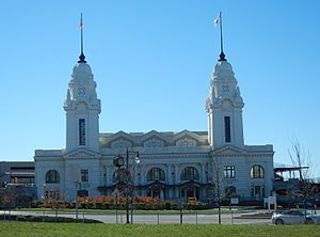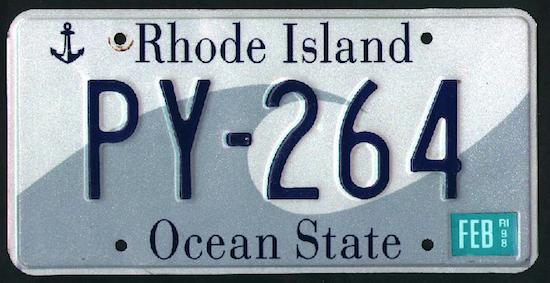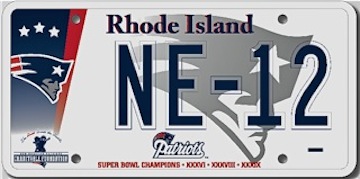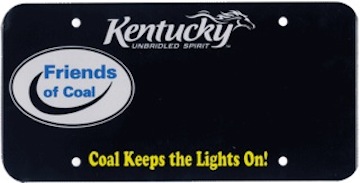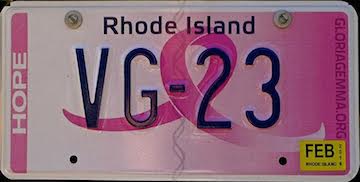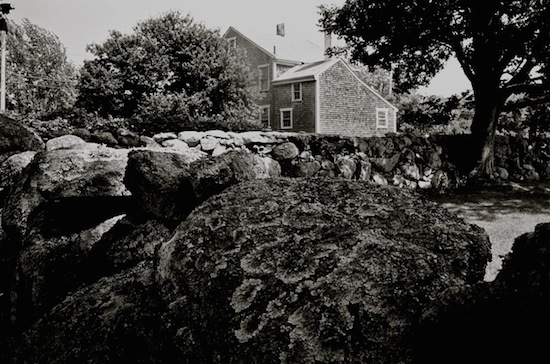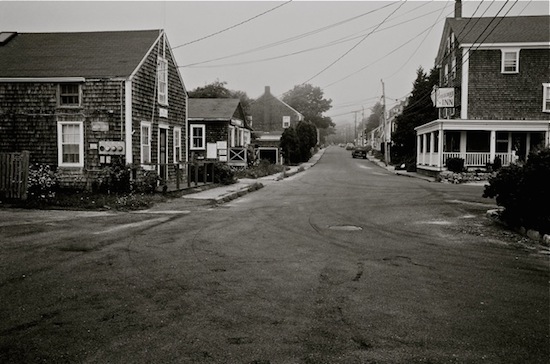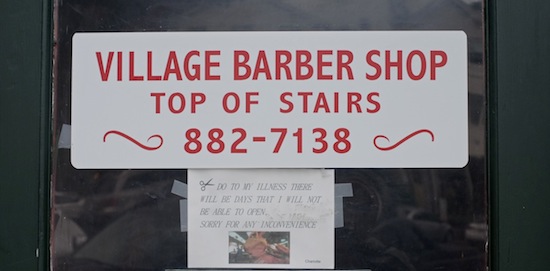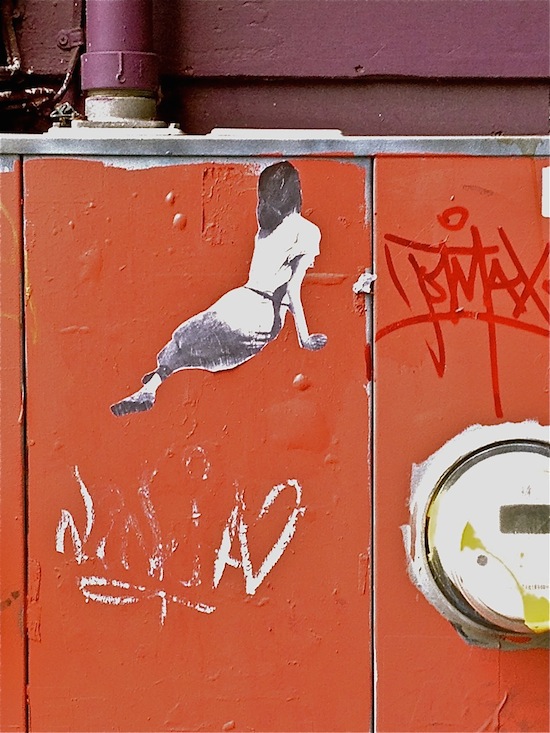
William Morgan: Touring the treasures of a cold campus
Spring in northern New England is a sometime thing. It does not usually come until May, if at all, and it doesn’t stay very long. (There's a bit of Yankee humor: "Spring around here is short. Last year, we played baseball that afternoon''.) A recent visit to Maine reminded me that we were still very much in what the late Noel Perrin, my favorite Dartmouth professor, called one of New England's six seasons: "Unlocking''. Except for a few brave daffodils, there were no flowers to be seen and few leaves on the trees.
Waiting for spring: House neat Wiscasset, Maine.
My wife and I walked around Bowdoin College during this period of grayness. Where, we wondered, were the crowds of prospective Polar Bears touring the campus on their spring break? Our own son had seen the Brunswick school in the flush of summer. Would an introduction in November or March have chilled his ardor for Bowdoin? What about students from Virginia or California showing up expecting Maine to look as it appears in online college promotional material?
Main Green at Bowdoin College, looking north.
Yet, we found something strangely appealing about Bowdoin at this time of year–a kind of astringency, a stark honesty defined by barebones trees. There was a sense of what it means to live in Maine year round, or to have attended Bowdoin, say, back in the 1820s, along with Longfellow and Hawthorne, when Brunswick was far away and pretty isolated from the world.
View of the green from Massachusetts Hall (1802),Bowdoin's oldest building.
Minus the leafed-out of shrubbery and flowering trees, it is a lot easier to appreciate the astounding collection of notable 19th Century and early 20th Century architecture that forms the center of the Bowdoin campus.
Charles McKim, of McKim, Mead & White, was the most famous American architect to build at Bowdoin. The Walker Art Museum (1894) is a perfect Renaissance revival jewel. The Western canon of painters, sculptors and architects whose names are carved on the façade might now be seen as a group of dead white men, but it was a typical homage found on Beaux-Arts civic buildings
Richard Upjohn was another giant of American architecture, best known for his Gothic revival churches, such as Trinity Church on Wall Street in New York. Upjohn, however, employed his beloved English Gothic only for Episcopalians. So the Bowdoin Chapel, 1844-55, was built in a severe German Romanesque for the Maine Congregationalists–a commanding if stern house of worship.
The tall and narrow chapel, with its large murals and painted ceiling, is an unexpected change from the starkness of unadorned white interiors of the typical New England meetinghouse.
Although not as famous as either Upjohn or McKim, Boston architect Henry Vaughan was a major designer of churches and colleges. Like Upjohn, he championed English Gothic. Here, Searles Science Hall of 1894 is an early example of a Jacobean-inspired collegiate building in America.
Echoes of Oxford and Cambridge, where Vaughan worked before emigrating to America, inform his Hubbard Library (1903). Soon, the lawn would be home to Frisbee games.
Above the entrance to Hubbard Library is this flowing banner carved with the admonition: Here Seek Converse With The Wise Of All Ages. Would such a motto be welcome in today's politically correct academy?
William Morgan is a longtime architectural historian and essayist. His books include Monadnock Summer: The Architectural Legacy of Dublin, New Hampshire and A Simpler Way of Life: Old Farmhouses of New York and New England
.
Nature imitating art on Amtrak
Commentary and photo by William Morgan
Travel today is mostly a chore. But one pleasure of taking Amtrak's Northeast Regional between Boston and New York is the trip along the shore of Long Island Sound.
Between Westerly, R.I., and New Haven, Conn. -- going through Stonington, Mystic, Old Lyme, Saybrook, Clinton, Madison and Guilford -– there is an aqueous landscape of estuaries, rivers and marshes.
Despite efforts to despoil our natural habitat, this watery stretch between Interstate 95 and the Sound cannot support much more than the train tracks and summertime sailboats.
An iPhone shot taken at 65 miles an hour, in the rain, should be nothing to write home about. Yet, this glimpse of coast around Clinton evoked New England landscape painters of 150 years ago, such as Worthington Whittredge, Martin Johnston Heade, and Fitz Hugh Lane. Like them, we are still inspired.
William Morgan: In tiny Ripley, Maine, a 'no-frills preaching box'
Main Street, Ripley, about 1910. (Courtesy of Penobscot Marine Museum)
Named for Brig. Gen. Eleazar Wheelock Ripley, a long-forgotten War of 1812 hero and later a congressman from Louisiana, this agricultural town in Somerset County has not changed much. Today's population (488) is not a lot more than it was in 1820, shortly after the town was founded. At 655, the population peaked in 1860, just before the Civil War, but was down to around 435 when this photograph was taken, around 1910.
A new Methodist church, built in 1889, joined the Union church (on the left in the photo above). Looking not unlike the ubiquitous one-room schoolhouse found throughout the rural U.S., the Ripley Methodist Church is your basic, no frills multi-denominational Protestant preaching box.
As part of its 75th anniversary, the church issued this commemorative plate, made by the Preston-Hopkinson Co., in Appomattox, Va. This little piece of northern New England history turned up in Savers' knick-knack department in Providence, for a relatively high price of almost $7.
Its owner apparently failed to note that such plates are "For Decorative Use Only," so a trip or two through the dishwasher marred the plate with some sort of ceramic pox.
The Methodist church is still active in its 127th year. But given Ripley's historic trajectory, one can imagine that this 50-year-old plate might have been the only relic of an abandoned church.
-- William Morgan
Mr. Morgan is a much-published architectural historian.
Willliam Morgan: The Doughboys of Tiverton
Commentary and photos by WILLIAM MORGAN
Despite 2014-2018 marking the centenary of World War I, there do not seem to be a lot of celebrations planned. No groups of war re-enactors and their camp followers are rushing to spend several years in the mud to recreate the Battle of the Somme or Passchendaele.
Yet, it was American "Doughboys,'' arriving in France who turned stalemate into victory (and into reparations that laid the foundation for the next great war, but that is another story).
Forgetting the isolationist sentiment that kept the United States out of the war for so long, many towns, such as Tiverton, R.I., erected statues to our heroes.
The Tiverton soldier appears to be defending the long-closed bridge across the Sakonnet River. As war memorials go, this bronze by Lewis J. White and cast by the Gorham Foundry is merely serviceable, neither exceptional nor dramatic.
Nevertheless, it still offers a story. The Roll of Honor lists over 150 names. Could Tiverton have sent so many soldiers and sailors to rescue Belgium and France from the Hun? Of those, over a dozen deaths were noted with little stars.
There are a number of Irish (Brophy, Flanagan, O'Connell), French (Beaulieu, Herveux, Lavault), Portuguese (Medeiros, Souza, Raposa). But what surprises is how a hundred years ago the majority of names were old New England ones–Bradshaw, Stafford, Holden. Four nurses are remembered as well, including Emma Frost and Mary Tabor Manchester.
William Morgan is an author and architectural historian.
William Morgan: A plea for snow tires
 (See exciting snow-tires-in-action pictures below.)
(See exciting snow-tires-in-action pictures below.)
If Rhode Islanders are the nation’s worst drivers, then it figures that a snowstorm makes matters worse. Given the Little Rhody driver’s reputation for aggressiveness, failure to acknowledge such basic guideposts as traffic lights, stop signs, or courtesy, winter conditions will only greatly magnify the legalized game of chicken that is driving in the Ocean State.
Given the attitude with which Rhode Islanders fling their cars around, it seems unlikely that we might consider serious drivers training, one that would include time on a skid pad. Scandinavian countries, for example, prudently require an extensive road test in snow and on ice.
Even if drivers in such places as Sweden and Finland are better trained to deal with winter, the Nordic countries require all cars to be shod with snow tires. You might think there are a lot of four-wheel-drive vehicles just south of the Arctic Circle, yet Oslo and Stockholm have mostly regular cars, including a lot of rear-wheel-drive ones, that get about fine with snow treads at all four corners.
Snow tires may seem like a quaint relic of the past. But if you look in old photo albums of Christmases past, you may see your parents and grandparents standing by cars with those knobby tires that actually got them places. Or take a look at Yankee Magazine, say, which often features nostalgic photos of New England villages in the snow where the cars don’t seem to be spinning wildly out of control or blocking school buses filled with children. (Our forebears also had other advantages, such as standard transmissions, less powerful machines, and perhaps a more realistic understanding of a car’s limitations.)
In the past quarter century all-season tires replaced snow tires. These are actually only three-season tires, despite manufacturers’ putative claims. The argument was that snow tires were noisy on the highway, and besides, who wanted the inconvenience of swapping tires twice a year—sort of like changing those cumbersome old wooden storm windows. The result has been a dangerously false sense of confidence in year-round tires, which simply do not get you through snow as well as tires specifically designed for the job.
The other problem with modern tires is their width. Look again at those images of Grandfather driving the Ford Woody up College Hill, in Providence, or at cars competing in winter rallies in Canada or the Pyrenees: They are riding on relatively narrow tires. A fat wide tire may look cool, and it is perfect for peeling out of the Dairy Queen parking lot on a hot summer’s night, but it performs poorly in rain, snow, or ice. Like a cross-country ski or an ice skate, a tire needs be skinny and offer as little resistance as possible.
Which brings us to the irony of the all-wheel-drive car or the SUV. Macho looking but fat tires offset the additional traction provided by four-wheel drive. Worse, buyers of SUVs have an over-inflated belief about their vehicles’ bad weather driving abilities: Big-soled shoes and the application of far too much horsepower are likely to increase skids and lessen surefootedness.
The modern car may have seat belts, air bags and sophisticated navigational equipment, but the most important safety device is still a good driver. Use the excuse of coming global warming to put off buying snow tires, if you must. Yet there are still a few tips—dare not call them rules –that might help us get about if more snow comes.
Driving a Range Rover, a Cadillac Escalade, or a Porsche Cayenne may stroke your Indiana Jones fantasies, but it does not make you a better driver.
Setting out in any kind of car without first cleaning all the windows makes you a dumb driver.
Keep your gas tank full. Abandoning your car on the interstate because you forgot to top up is both needless and very dumb.
A light touch on the accelerator is always best. A powerful engine may fuel your testosterone level, but on snow and ice more power means less control.
From a practical point, fewer spinouts and fender-benders may keep winter traffic flowing a bit more smoothly. So, if we cannot put our in-your-face driving manners on hold for the winter, perhaps we can replace the metaphor of the driver as bruising defensive lineman with that of a graceful cross-country skier.
William Morgan is a Providence-based author and architectural historian. A version of this piece appeared in The Providence Journal in January 2008 and last month. The pictures below are added now.
Eric Carlson in 1963 Monte Carlo Rally with snow tires.
1963 Volvo in a winter road race using snow tires.
William Morgan: In bleakest winter
|
|
|||
The R.I. license-plate-design crisis continues
There is something about a bureaucrat that loves a poorly designed license plate. Only three weeks ago I was railing against new pink breast-cancer plate as an example of inexcusably deficient graphic quality. In that time, the State of Rhode Island and Providence Plantations, apparently tired with its "Wave" plate designed by the famous designer and RISD graduate Tyler Smith, has come up with an aggressively bland replacement.
To begin with the letters are now all digitally printed, rather than embossed. Despite what 3M lobbyists may tell you, flat letters are not more visible. Rhode island has been about the last hold out with raised letters, which are not only more readable, but they are more elegant.
Which of the plates below is more legible?
The blue may be handsome, but its punch is mitigated by the white border, which tends to bleed out the blue. Using gold for the sailboat (which is too small to be really read properly) and the double mottos is just a little unnecessary glitz.
Why does a license plate even need a motto? Does the happy phrase "Ocean State" make us like ourselves more? Does it really boost tourism?
And as for "Beautiful," this new slogan that is being applied to roadsigns across Rhode Island is both superfluous (either our state is beautiful or it is not) and a mark of insecurity (do we really need to be told, are we not smart enough to figure it out, or is is like a creme that promises to make us feel more attractive?).
What is really sad is that past Rhode Island plates have been absolute winners in terms of dignity and superior design. Instead of adopting this undistinguished blue bit of blah, let us go back to the no-nonsense plates of the past. No mottos, so cheap boosterism, just our name.
William Morgan: New England's glorious temples of transport
William Morgan: A license plate worthy of Liberace
Photos (below) and comment by WILLIAM MORGAN The State of Rhode Island and Providence Plantations has blessedly not joined the rush to offer dozens of specialty and charity license plates. And not least of all, the base Rhode Island tag was designed by a noted graphic designer, Tyler Smith, and is quite handsome.
States such as Florida have scores, even hundreds, of affinity plates available for an extra fee. Rhode Island's paltry offering is only eight, including the Patriots and the Plum Island Lighthouse.
So far, Rhode Island has avoided any of the overtly religious, political and downright dumb plates that have made a mockery of the idea that a license plate is a nothing more than a way of identifying a vehicle–and not an opportunity to raise money for athletic leagues, Pro-Choice activists, or a big despoiling industry. Or as a Montana State Police captain said recently, "I need to see your number, not know what you favorite flavor of coffee is."
While one would not wish to discourage a few good charities from trying to raise money, I wonder if crowding a license plate with too much information and appalling design is really the most appropriate way to raise funds.
The Ocean State's latest affinity plate is for a noble aim – to fight breast cancer. $20 for each tag goes to the state's women's cancer-screening program. Marvelous. But is not then the next logical specialty plate one that would raise money for prostate-cancer research? What color would the ribbon be? The image of a little walnut-sized gland gracing the plate?
Hats off to the Gloria Gemma Breast Cancer Resources Foundation. But as an example of design from the "Creative Capital," this plate is a graphic disaster. The font for Rhode Island is too bland, for starters. Worst of all is the fading horizontal pink color scheme, as if the plate had been dipped halfway into a bucket of Pepto-Bismol. It looks like something Liberace ordered over the telephone.
William Morgan: The Quaker Coast
Photos (below) and commentary by WILLIAM MORGAN
It has been almost a decade since I published a book of photographs on the Cape Cod cottage. Since, then, I have been looking for another suitable topic.
My (more successful) photographer friends tell me no one is underwriting black and white photos taken with film. And my favorite publisher nixed the idea for a photographic study of what I call the Quaker Coast (the towns of Dartmouth and Westport in Massachusetts, and Little Compton, just over the border in Rhode Island), declaring that there would be no market for such a book.
Yet there is something special – and not yet ruined – about those three towns. Fishing and agriculture still survive, if not actually thrive, there. And the mostly unspoiled landscape and the prevalence of a plain vernacular architecture, mostly wrapped in cedar shingles.
In lieu of the fantasy book, I offer the readers of New England Diary three images from the book proposal.
Addendum: Much of Cape Cod, Martha's Vineyard and Nantucket were also Quaker. I went to a few family memorial services in the Quaker meeting house in West Falmouth, on the Cape.
Many whalers were of Quaker background -- but that didn't make them gentle at all. Rather, many were tough and rapacious. Many became very successful capitalists whose investments spanned the world.
-- Robert Whitcomb
At least the barber is still there, often
|
|
|||
Art appreciation on Federal Hill
Commentary and photograph by WILLIAM MORGAN
Christina Olson, the cripple depicted in Andrew's Wyeth's 1948 painting "Christina's World, '' has moved beyond the iconic, even beyond kitsch, to the commonplace – as ubiquitous as the "Mona Lisa ''or "Whistler's Mother''.
Still, her appearance as a bit of graffiti on a utility meter box is a bit jarring. A purple house with orange highlights in Luongo Memorial Square , in the Federal Hill section of Providence, suggests that the neighborhood is having a renaissance. Or at least educated people who will get the reference are moving in.
The wine-dark Acushnet
Here's a terrific essay by William Morgan, with great pictures, about the grand Greek Revival buildings put up in the 19th Century in and around whale-oil-rich New Bedford, which for a time was the richest community in America. The discovery of the many uses of petroleum ended that golden age for New Bedford (while constraining the nightmare of the whales -- highly intelligent mammals that the whalers consigned to excruciatingly painful deaths). See "Athens on the Acushnet''.
A troubled beauty
Manmade beauty within natural beauty -- but not refuges from reality. That's what William Morgan has described in his new book, with gorgeous photos by Trevor Trento: "A Simpler Way of Life: Old Farmhouses of New York & New England'', published by Norfleet Press and selling for $49.59. This book itself can be a heirloom.
Mr. Morgan, a distinguished architectural historian, has written a text that does not sugarcoat the tough and uncertain lives led by many farmers, especially when most of these farmhouses were built, in inland, upland New England and New York State, in the late 18th Century and well into the 19th.
The farmers were constantly at the mercy of the weather, far-away market forces and other factors over which they had no control. The book is informed by a deep understanding of the architectural, social and economic history, and life today, of the rural part of our corner of North America.
Messrs. Morgan and Mr. Trento implicitly make the argument that the old country house can be as beautiful as any mansion, while evoking more humanity. There's a poignancy about these old houses.
But, my God, they sure can be hard to heat and maintain!
Laying a glove on Seekonk
Generally beautiful Brown
There are architectural disasters on the Brown Universiy campus, such as the hideous science skycraper, the crumbly-looking Rockefeller Library and the brutalist List Art Gallery, but all in all, the campus is one of the most beautiful urban campuses anywhere, with buildings from Colonial days through most of the styles since then, including a bunch of recent "starchitects''. See my friend William Morgan's take on it.













